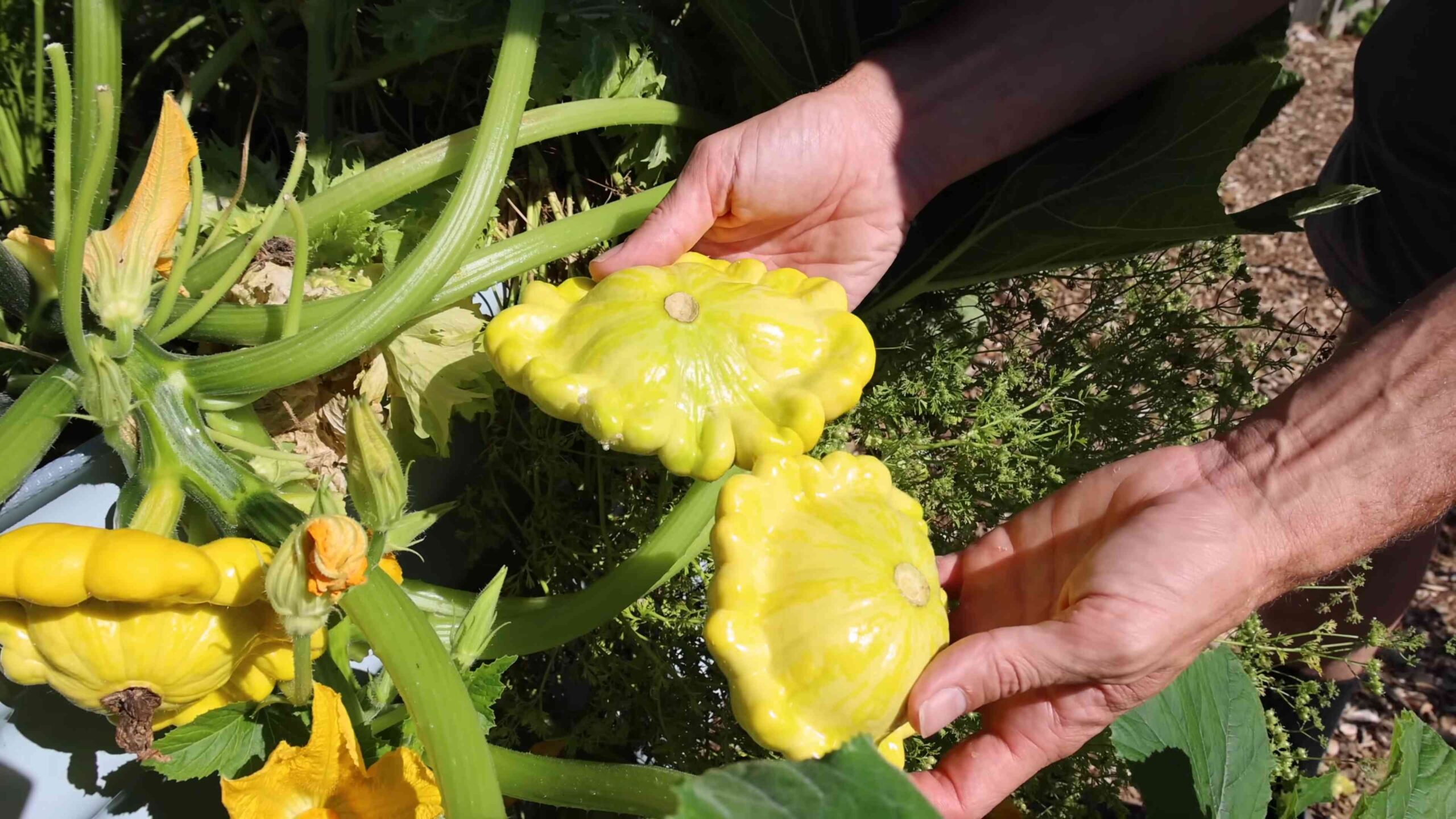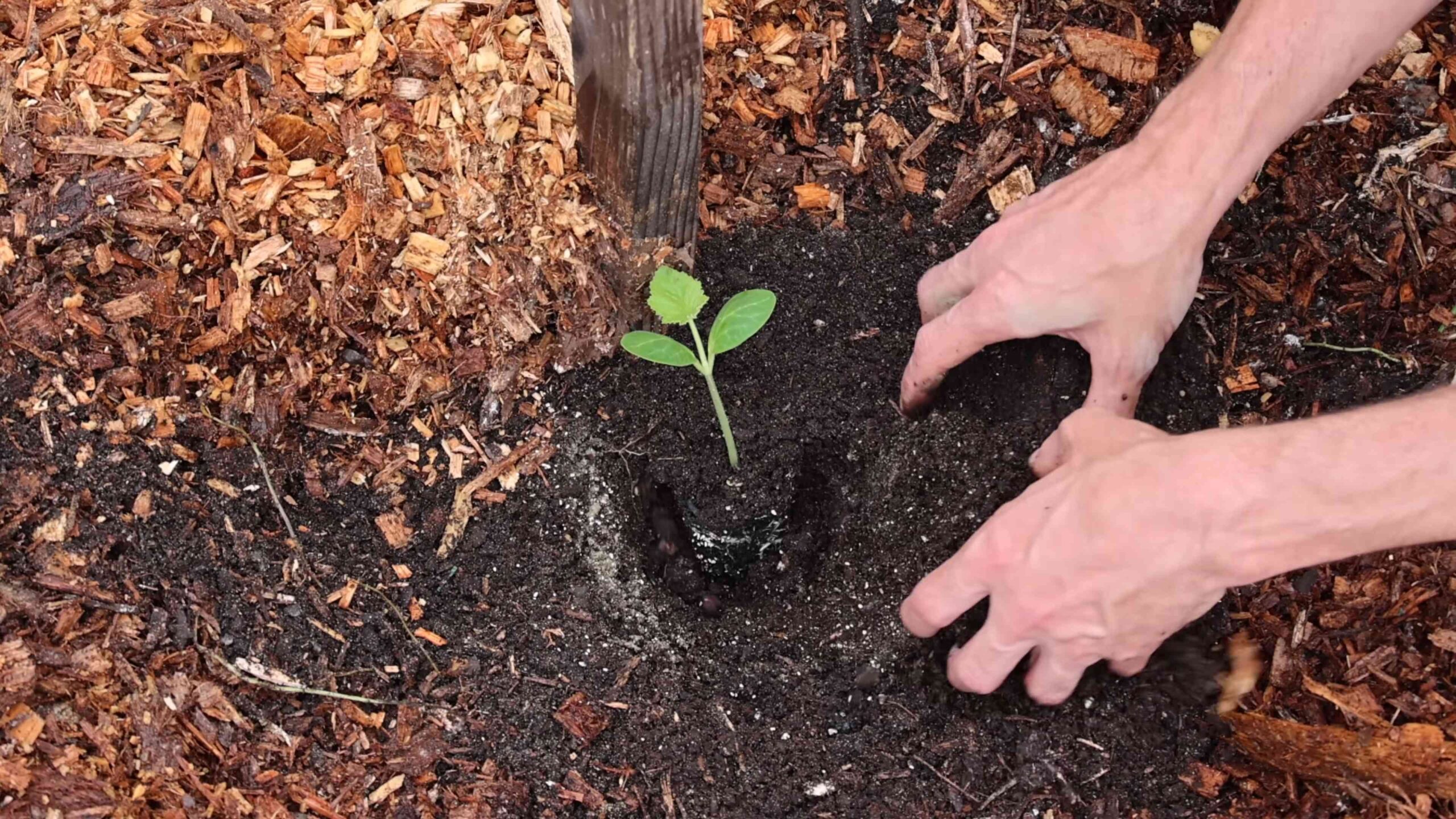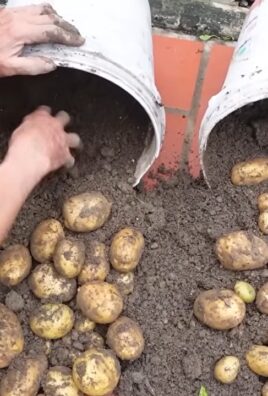Grow Squash Vertically and unlock a world of gardening possibilities! Are you dreaming of a bountiful squash harvest but limited by space? Imagine lush, vibrant squash vines climbing gracefully upwards, laden with delicious fruit, all without taking over your entire garden. That’s the magic of vertical gardening, and I’m here to show you how to make it happen with squash!
For centuries, cultures around the globe have understood the value of maximizing space. From the hanging gardens of Babylon to the terraced rice paddies of Asia, ingenuity has always driven us to find creative ways to cultivate food. While not traditionally grown vertically, squash is surprisingly adaptable, and this DIY trick taps into that same spirit of resourcefulness.
Let’s face it, traditional squash growing can be a land hog. Those sprawling vines can quickly overwhelm a garden bed, leaving little room for anything else. But what if you could reclaim that space and still enjoy a delicious harvest? That’s where growing squash vertically comes in. This DIY project not only saves space but also improves air circulation, reduces the risk of pests and diseases, and makes harvesting a breeze. Plus, it looks absolutely stunning! So, if you’re ready to transform your garden and grow squash vertically like a pro, let’s dive in!

Grow Squash Vertically: A DIY Guide to Maximize Your Harvest
Hey there, fellow gardeners! Are you dreaming of a bountiful squash harvest but short on space? Well, I’ve got just the trick for you: vertical squash gardening! It’s a fantastic way to maximize your yield, keep those sprawling vines under control, and even add a touch of visual appeal to your garden. Trust me, once you try it, you’ll never go back to sprawling squash again. Let’s dive in!
Why Grow Squash Vertically?
Before we get our hands dirty, let’s quickly touch on why vertical squash growing is so awesome:
* Space Saving: This is the big one! Squash vines can be real estate hogs. Growing them vertically frees up valuable ground space for other veggies.
* Improved Air Circulation: Vertical growth promotes better airflow around the plants, reducing the risk of fungal diseases like powdery mildew.
* Easier Harvesting: No more crawling around under prickly leaves to find your squash! They’re right there at eye level, making harvesting a breeze.
* Pest Control: It’s easier to spot and deal with pests when your plants are growing vertically.
* Aesthetic Appeal: Let’s be honest, a trellis covered in lush squash vines is a beautiful sight!
Choosing the Right Squash Variety
Not all squash varieties are created equal when it comes to vertical growing. You’ll want to choose varieties that are naturally more compact or have smaller fruits. Here are a few of my favorites:
* Zucchini: These are generally well-suited for vertical growing, especially bush varieties.
* Yellow Squash: Similar to zucchini, bush varieties are your best bet.
* Delicata Squash: These smaller winter squashes are manageable on a sturdy trellis.
* Patty Pan Squash: Their compact size makes them a good choice.
* Smaller Butternut Squash: Look for varieties specifically bred for smaller fruits.
Important Note: Avoid growing very large, heavy squash varieties like pumpkins or giant winter squashes vertically. They’ll likely be too heavy for most trellises and could damage your plants.
Building Your Squash Support System
Okay, now for the fun part! You’ll need a sturdy support system for your squash vines to climb. Here are a few options:
* Trellis: A classic choice! You can buy a pre-made trellis or build your own from wood or metal.
* Arbor: An arbor adds a touch of elegance to your garden and provides ample support for squash vines.
* Cattle Panel: These are strong, durable, and relatively inexpensive. Simply bend them into an arch or A-frame.
* DIY Netting System: You can create a netting system using sturdy posts and strong netting.
My Recommendation: For most home gardeners, a sturdy wooden trellis or a cattle panel bent into an arch is a great option. They’re relatively easy to build or acquire and provide excellent support.
Step-by-Step Guide to Vertical Squash Growing
Alright, let’s get down to the nitty-gritty! Here’s a step-by-step guide to growing squash vertically:
1. Prepare Your Soil
Squash are heavy feeders, so you’ll need to prepare your soil accordingly.
* Choose a sunny location: Squash needs at least 6-8 hours of sunlight per day.
* Amend the soil: Mix in plenty of compost or well-rotted manure to improve drainage and fertility.
* Test your soil pH: Squash prefers a slightly acidic to neutral pH (6.0-7.0). Amend as needed.
2. Install Your Support System
Before you plant your squash, install your chosen support system. This will prevent you from disturbing the roots later.
* Trellis: Secure the trellis firmly in the ground, making sure it’s stable and won’t topple over.
* Cattle Panel: Bend the cattle panel into an arch and secure it to the ground with stakes.
* Arbor: Follow the manufacturer’s instructions for installation.
3. Plant Your Squash
You can either start your squash seeds indoors or direct sow them in the garden.
* Starting Seeds Indoors: Start seeds 3-4 weeks before the last expected frost. Transplant seedlings after the danger of frost has passed.
* Direct Sowing: Sow seeds directly in the garden after the last expected frost.
* Planting Distance: Space plants according to the variety’s recommendations. Generally, 18-24 inches apart is a good starting point.
* Planting Depth: Plant seeds about 1 inch deep.
* Water Thoroughly: After planting, water the seeds or seedlings thoroughly.
4. Train Your Vines
As your squash vines grow, you’ll need to train them to climb the support system.
* Gently Guide Vines: Use soft twine or plant ties to gently attach the vines to the trellis or support structure.
* Encourage Upward Growth: Encourage the vines to grow upwards by directing them towards the support.
* Prune as Needed: Prune away any unwanted side shoots or leaves to improve airflow and encourage fruit production.
5. Provide Support for Developing Fruit
As your squash fruits develop, they may need additional support, especially larger varieties.
* Slings: Create slings from old pantyhose, burlap, or netting to support the developing fruit.
* Tie Slings to Support: Tie the slings to the trellis or support structure to take the weight off the vines.
* Monitor Fruit Weight: Keep an eye on the weight of the fruit and adjust the slings as needed.
6. Water and Fertilize Regularly
Squash needs consistent watering and fertilization to thrive.
* Water Deeply: Water deeply and regularly, especially during hot, dry weather. Aim for about 1 inch of water per week.
* Fertilize Regularly: Fertilize every 2-3 weeks with a balanced fertilizer or compost tea.
* Mulch: Apply a layer of mulch around the base of the plants to help retain moisture and suppress weeds.
7. Pest and Disease Control
Keep an eye out for common squash pests and diseases.
* Squash Bugs: Handpick squash bugs and their eggs. You can also use insecticidal soap.
* Squash Vine Borers: Wrap the base of the stems with aluminum foil to prevent borers from entering.
* Powdery Mildew: Improve air circulation and apply a fungicide if necessary.
* Cucumber Beetles: Use row covers to protect young plants.
8. Harvest Your Squash
Harvest your squash when it’s ripe and ready.
* Harvest Time: Harvest summer squash when it’s young and tender. Harvest winter squash when the skin is hard and the stem is dry.
* Cut the Stem: Use a sharp knife or pruners to cut the stem close to the fruit.
* Handle with Care: Handle the squash carefully to avoid bruising.
Troubleshooting Tips
Even with the best planning, you might encounter a few challenges. Here are some common issues and how to address them:
* Squash Vines Not Climbing: Make sure the vines have something to grab onto. Gently guide them towards the support and tie them loosely.
* Fruit Rotting on the Vine: This could be due to poor air circulation or fungal diseases. Improve airflow by pruning and apply a fungicide if necessary. Make sure the fruit isn’t sitting directly on the ground.
* Lack of Pollination: Squash needs to be pollinated to produce fruit. If you’re not seeing any fruit set, you may need to hand-pollinate the flowers.
* Yellowing Leaves: This could be a sign of nutrient deficiency. Fertilize with a balanced fertilizer or compost tea.
Hand-Pollinating Squash
If you’re not seeing a lot of bees in your garden, or if you’re growing squash in a greenhouse, you may need to hand-pollinate the flowers. It’s easier than it sounds!
* Identify Male and Female Flowers: Male flowers have a long, thin stem, while female flowers have a small, immature fruit at the base.
* Pollinate in the Morning: The best time to hand-pollinate is early in the morning, when the flowers are open.
* Transfer Pollen: Use a small paintbrush or cotton swab to collect pollen from the male flower.
* Apply Pollen to Female Flower: Gently brush the pollen onto the stigma (the sticky part) of the female flower.
* Repeat as Needed: Repeat the process for all the female flowers that you want to pollinate.
Extra Tips for Success
* Choose the Right Location: As mentioned before, squash needs at least 6-8 hours

Conclusion
So, there you have it! Growing squash vertically isn’t just a gardening trend; it’s a game-changer for anyone looking to maximize their yield, conserve space, and add a touch of architectural beauty to their garden. We’ve explored the numerous benefits, from improved air circulation that combats common squash diseases like powdery mildew to the sheer joy of harvesting plump, healthy squash at eye level.
This method truly transforms the way you approach squash cultivation. No more sprawling vines taking over your precious garden real estate. No more aching backs from bending over to harvest hidden fruits. Instead, you’ll have a visually stunning, productive garden that’s the envy of the neighborhood.
But the beauty of this DIY trick lies not only in its practicality but also in its adaptability. Feel free to experiment with different support structures. While we’ve discussed trellises and cages, you could also consider using repurposed materials like old ladders or even sturdy branches to create a rustic, natural look. For smaller squash varieties like zucchini or delicata, a simpler A-frame trellis might suffice. For larger varieties like pumpkins or butternut squash, ensure your structure is robust enough to handle the weight, perhaps reinforcing it with extra supports or using wider mesh.
Consider the specific needs of your chosen squash variety. Some, like spaghetti squash, have naturally shorter vines and may require less support. Others, like certain pumpkin varieties, are vigorous growers and will need a substantial structure to climb. Don’t be afraid to prune your squash vines to encourage fruit production and maintain a manageable size. Regularly check the ties securing your squash to the support structure, adjusting them as needed to prevent damage to the stems.
Beyond the structural variations, you can also experiment with companion planting. Growing basil or marigolds near your vertically grown squash can help deter pests and attract beneficial insects. Consider adding a layer of mulch around the base of your plants to retain moisture and suppress weeds.
Ultimately, the success of your vertical squash garden depends on your willingness to experiment and adapt. Observe your plants closely, paying attention to their growth habits and any signs of stress. Don’t be afraid to tweak your approach as needed.
We wholeheartedly encourage you to give this DIY trick a try. It’s a rewarding project that will not only enhance your gardening experience but also provide you with a bountiful harvest of delicious, homegrown squash. And most importantly, we want to hear about your experiences! Share your photos, tips, and challenges in the comments below. Let’s build a community of vertical squash growers and learn from each other. Tell us what varieties you’re growing, what support structures you’re using, and any unique techniques you’ve discovered. Let’s all learn how to **grow squash vertically** together!
Frequently Asked Questions
What types of squash are best suited for vertical growing?
While many squash varieties can be grown vertically, some are better suited than others. Smaller varieties like zucchini, yellow squash, delicata, and spaghetti squash are generally easier to manage on a trellis or other support structure. Larger varieties like butternut squash and pumpkins can also be grown vertically, but they require a much sturdier support system and may need additional support for the developing fruits. Consider the mature size and weight of the squash variety when choosing your support structure. Also, consider bush varieties of squash, these are not suitable for vertical growing.
How do I support the squash as it grows vertically?
There are several ways to support squash as it grows vertically. The most common methods include using trellises, cages, or netting. Trellises can be made from wood, metal, or even repurposed materials like old ladders. Cages can be constructed from wire mesh or tomato cages. Netting can be hung from a frame or attached to a wall. As the squash vines grow, gently guide them up the support structure and tie them in place with soft twine or plant ties. For heavier squash varieties, you may need to provide additional support for the individual fruits using slings made from fabric or netting.
How much sunlight does vertically grown squash need?
Like all squash varieties, vertically grown squash needs at least 6-8 hours of direct sunlight per day to thrive. Choose a location for your vertical garden that receives ample sunlight throughout the day. If you live in a particularly hot climate, you may need to provide some afternoon shade to prevent the squash from overheating.
How often should I water vertically grown squash?
Vertically grown squash tends to dry out more quickly than squash grown on the ground, so it’s important to water them regularly. Water deeply and thoroughly, ensuring that the soil is moist but not waterlogged. Check the soil moisture regularly and water when the top inch or two feels dry to the touch. During hot, dry weather, you may need to water your squash daily. Consider using a soaker hose or drip irrigation system to deliver water directly to the roots of the plants.
What kind of soil is best for vertically grown squash?
Squash prefers well-drained, fertile soil that is rich in organic matter. Amend your soil with compost or other organic matter before planting to improve its drainage and fertility. A slightly acidic to neutral soil pH (6.0-7.0) is ideal. You can test your soil pH using a home soil testing kit or by sending a sample to your local extension office.
How do I prevent pests and diseases on vertically grown squash?
Growing squash vertically can help to improve air circulation and reduce the risk of fungal diseases like powdery mildew. However, it’s still important to monitor your plants regularly for pests and diseases. Common squash pests include squash bugs, squash vine borers, and aphids. You can control these pests using organic methods like hand-picking, insecticidal soap, or neem oil. To prevent fungal diseases, avoid overhead watering and ensure that your plants have good air circulation. You can also apply a fungicide if necessary.
Can I grow squash vertically in containers?
Yes, you can grow squash vertically in containers, but you’ll need to choose a large container that is at least 24 inches in diameter and 12 inches deep. Use a high-quality potting mix that is well-draining and amend it with compost or other organic matter. Be sure to provide a sturdy support structure for the squash vines to climb. Container-grown squash may require more frequent watering and fertilization than squash grown in the ground.
How do I harvest vertically grown squash?
Harvest your squash when it is fully mature and the skin is hard and resistant to scratching. Use a sharp knife or pruners to cut the squash from the vine, leaving a few inches of stem attached. Handle the squash carefully to avoid bruising or damaging the skin. Store your harvested squash in a cool, dry place.
What are some companion plants for vertically grown squash?
Companion planting can help to improve the health and productivity of your vertically grown squash. Some good companion plants for squash include basil, marigolds, nasturtiums, and beans. Basil helps to repel squash bugs and other pests. Marigolds attract beneficial insects that prey on squash pests. Nasturtiums deter aphids and other pests. Beans fix nitrogen in the soil, which can benefit the squash plants.
How do I prune my vertically grown squash?
Pruning can help to improve air circulation and encourage fruit production on your vertically grown squash. Remove any yellowing or diseased leaves. You can also prune back the vines to encourage branching and more fruit production. Be careful not to remove too many leaves, as this can weaken the plant.





Leave a Comment